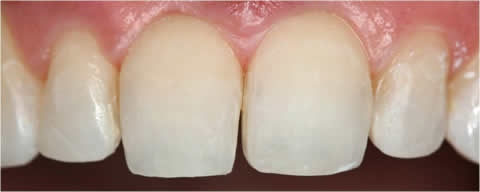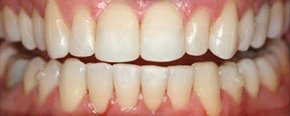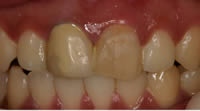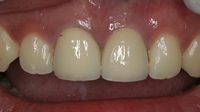
Before

After
Dental bonding, also known as composite bonding, has been used in dentistry for many years. It is an excellent way to repair cracked, chipped and discolored teeth as well as replacing silver amalgam fillings. Dental bonding can also be used to close gaps and reshape misaligned teeth, providing a straighter, more uniform smile.
Bonding is probably the most conservative of all the cosmetic dentistry treatments. It involves minimum alteration to the original tooth enamel, and is reversible if none of the tooth enamel is removed. The results are seen immediately.
Bonding has been used for many years, bonding composite to teeth is a very popular option because the material used matches very closely to the shade of your natural teeth.
The Procedure
- Not all bonding procedures require an injection.
- If anesthesia is indicated a local anesthetic will be given to numb the tooth and the surrounding tissue - The tooth will be thoroughly cleaned. All decay, food debris or tartar will be removed.
- The tooth is prepared using a phosphoric-acid-based gel; this roughens the surface of the tooth. A bonding agent (glue) is applied to the roughened surface and set using a concentrated beam of ultraviolet light. The composite is then applied in layers and set at each stage using the ultraviolet light. The composite will be continued to be applied in layers until the desired shape is achieved.
- The last stage is to polish the restoration to achieve the final shape and smooth finish.


